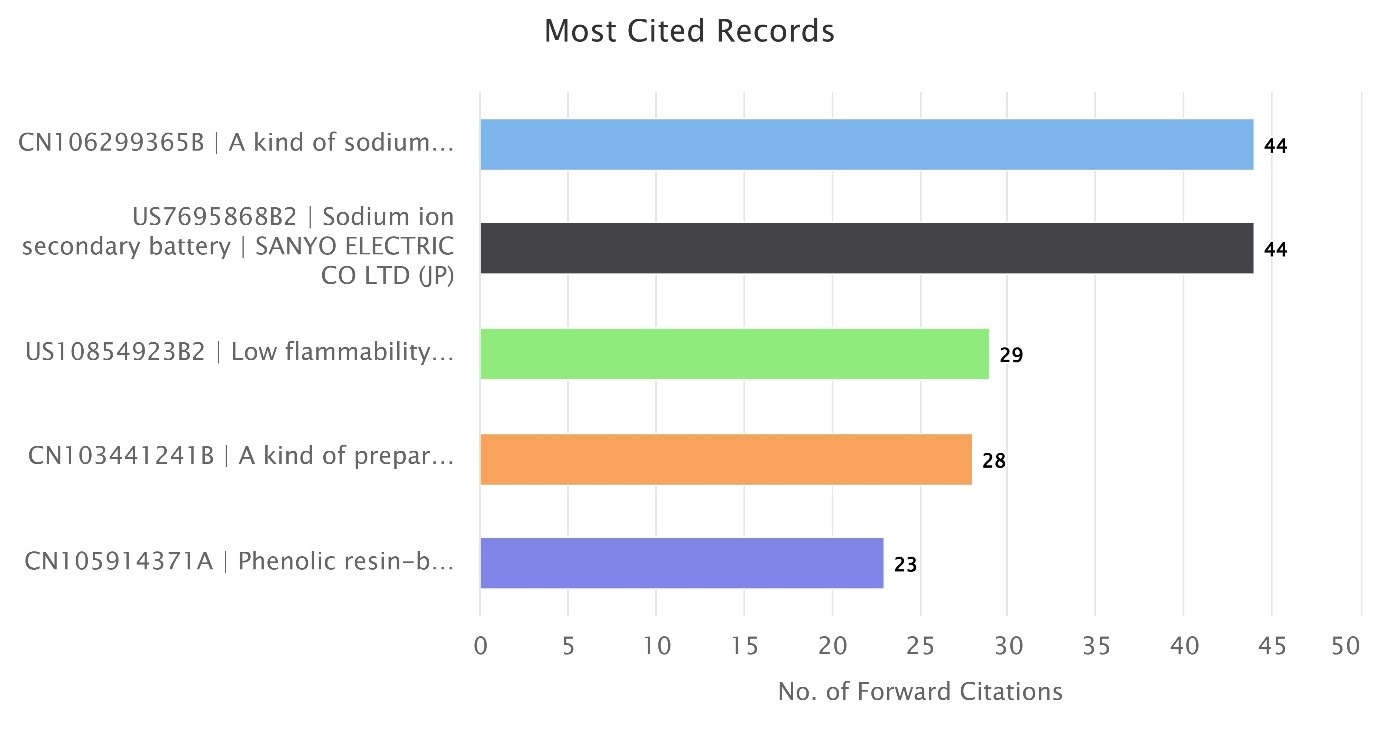Introduction to Sodium-Ion Batteries: The quest for clean and sustainable energy solutions has led us down many paths, from harnessing the sun’s rays to capturing the wind’s whispers. But nestled within this pursuit lies a silent hero, patiently waiting to take center stage: the sodium-ion battery. Often overshadowed by its lithium-ion sibling, the sodium-ion battery is quietly carving its own path towards a brighter future, fueled by the Earth’s most abundant element – sodium. Sodium, being more abundant and cost-effective, presents an appealing prospect for energy storage technologies.
Breaking Free from Lithium’s Grip:
Lithium-ion batteries have powered our technological world for decades, from smartphones to electric vehicles. Yet, their reign faces challenges. Lithium, the key ingredient, is a finite resource, concentrated in a handful of countries, raising concerns about geopolitical dependencies and resource scarcity. Moreover, lithium extraction and processing raise environmental eyebrows, casting a shadow on the sustainability claims of lithium-ion technology.
Enter sodium, the underdog with a winning punch. This ubiquitous element, present in oceans, rocks, and even tears of joy, offers a compelling alternative. Sodium is:
- Abundant: It’s the sixth most abundant element on Earth, readily available and evenly distributed, minimizing supply chain constraints and geopolitical tensions.
- Cost-Effective: Sodium is significantly cheaper than lithium, potentially translating to more affordable batteries and democratizing access to clean energy technologies.
- Environmentally Friendly: Sodium extraction and processing have a lower environmental footprint compared to lithium, contributing to a greener energy future.
This article explores the structure, working methodology, and comparative analysis of sodium-ion batteries in contrast to their well-established lithium-ion counterparts.
Imagine a tiny playground filled with two sets of kids: the blue team (sodium ions) and the yellow team (electrons). They love playing tag but with a twist! Every time the blue team catches a yellow teammate, they grab hands and become friends, joining a special group called the “anode.” When the playground lights turn off (the battery is discharged), these friends stick together.
But the fun doesn’t stop there! When the lights turn back on (the battery is charged), the yellow team gets a burst of energy and breaks free from the blue team. They zip through a special tunnel on the other side of the playground (the electrolyte) and join the “cathode,” another group of friends waiting to play. This back-and-forth movement of blue and yellow teams, grabbing and releasing each other, is the magic behind a sodium-ion battery!
Overall Working of Sodium-Ion
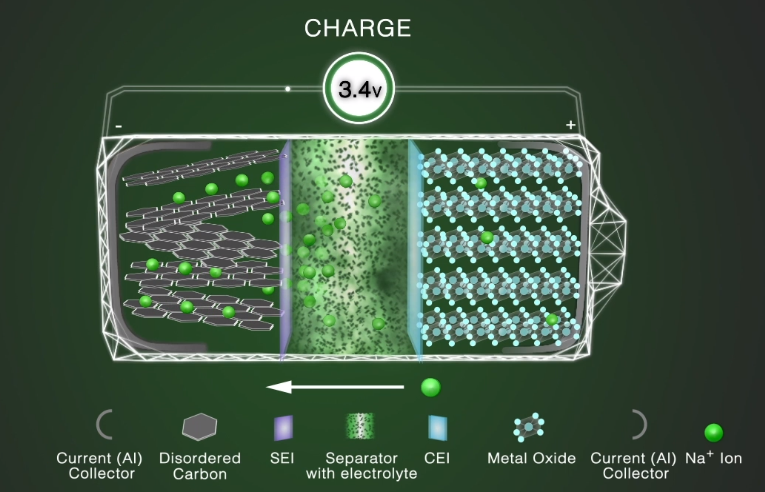


The movement of sodium ions from the cathode to the anode completes the charging cycle. The energy used to separate the sodium ions and electrons at the cathode is stored in the form of chemical potential energy within the anode material.
1. Cathode Reaction:
- The charging process begins at the cathode, typically composed of materials such as sodium transition metal oxides or phosphates. During discharge, these materials release sodium ions (Na⁺) and electrons (e⁻). However, during the charging process, the reverse reaction takes place.
- At the cathode, sodium ions in the electrolyte combine with electrons to form sodium metal or sodium alloy: Na⁺ + e⁻ → Na (metal)
2. Electron Flow:
- The electrons released during this process flow through an external circuit, creating an electric current that can be utilized for various applications.
3. Ion Movement in Electrolyte:
- Simultaneously, positively charged sodium ions move through the electrolyte towards the anode. The electrolyte, usually a solution or gel containing sodium salts, serves as the medium through which ions can travel.
4. Anode Reaction:
- At the anode, typically composed of materials like hard carbon, sodium ions from the electrolyte are absorbed or intercalated. The anode reaction is represented as: Na (metal) → Na⁺ + e⁻
- This process involves the anode material accepting the sodium ions and storing them, acting as a reservoir during the charging phase.
Discharging
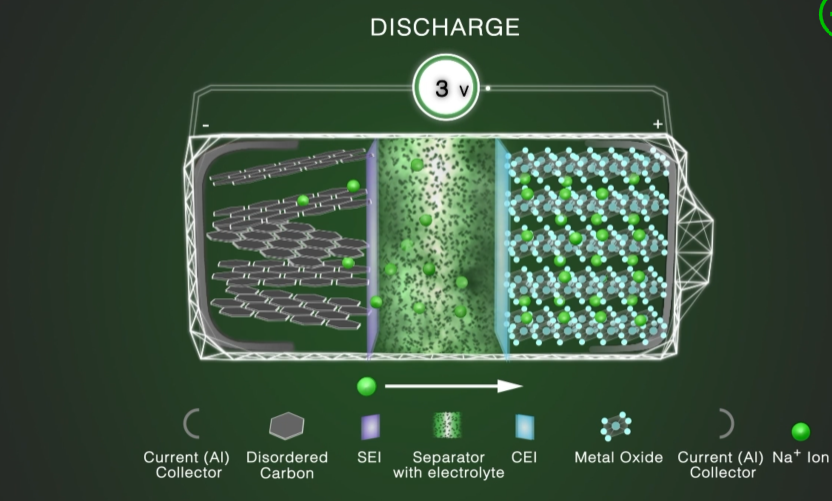


During discharging (when the battery is in use), the stored energy is released. The sodium ions move back to the cathode through the electrolyte, and the electrons flow through the external circuit to power the connected device. This process of ion movement is crucial to the functioning of sodium-ion batteries, and its reversibility allows the battery to undergo multiple charge and discharge cycles. Researchers are actively working to optimize materials and enhance the efficiency and lifespan of sodium-ion batteries, making them a promising candidate for various energy storage applications.
Benefits of Sodium-Ion Batteries
1. Abundance of Sodium
- Sodium is more abundant and widely distributed than lithium, contributing to lower production costs and reduced concerns about resource scarcity.
2. Cost-Effectiveness
- Sodium-ion batteries have the potential to be more cost-effective than lithium-ion batteries due to the lower cost associated with sodium and the abundance of raw materials.
3. Similar Electrochemical Properties to Lithium
- Sodium ions share similar electrochemical properties with lithium ions, allowing for the utilization of existing knowledge and infrastructure developed for lithium-ion batteries.
4. Compatibility with Existing Infrastructure
- Sodium-ion batteries can potentially be integrated into existing lithium-ion battery manufacturing facilities with minimal modifications, making the transition more feasible.
5. Large-Scale Energy Storage
- Suited for large-scale energy storage applications, sodium-ion batteries are valuable for stabilizing electrical grids and managing fluctuations in renewable energy production.
6. Reduced Environmental Impact
- Sodium-ion batteries can be more environmentally friendly than lithium-ion batteries in terms of resource extraction and disposal.
7. Safety
- Sodium-ion batteries may have safety advantages over lithium-ion batteries, with sodium being less prone to thermal runaway reactions.
8. Versatility in Applications
- Sodium-ion batteries can find applications in various fields, including electric vehicles, stationary energy storage, and portable electronics.
9. Reduced Dependency on Lithium
- Diversifying the battery market with alternatives like sodium-ion batteries can help reduce the global dependency on specific raw materials, mitigating potential supply chain issues.
It’s important to note that while sodium-ion batteries hold promise, research and development are ongoing to address challenges such as energy density, cycle life, and overall performance.
Comparison between Sodium-Ion and Lithium-Ion Batteries
| Aspect | Sodium-Ion Battery | Lithium-Ion Battery |
| Energy Density | Generally lower than lithium-ion batteries. | Lithium-ion batteries typically have higher energy density. |
| Costs | Sodium is more abundant and potentially lower in cost. | Lithium resources are less abundant, and costs may be higher. |
| Cycle Life | Cycle life can vary but may be lower compared to lithium-ion. | Lithium-ion batteries often have longer cycle life. |
| Materials Availability | Sodium is abundant and widely available. | Lithium resources are more limited, leading to concerns about availability. |
| Safety | Generally considered safer than lithium-ion batteries. | Lithium-ion batteries can pose safety risks, especially under certain conditions. |
| Charging Time | Charging time may vary; sodium-ion batteries may have longer charging times. | Lithium-ion batteries typically have relatively shorter charging times. |
| Temperature Stability | Generally stable at various temperatures. | Lithium-ion batteries may have thermal stability concerns. |
| Applications | Suited for large-scale energy storage, grid applications. | Widespread use in portable electronics, electric vehicles, and stationary energy storage. |
| Commercialization Status | Emerging technology, with limited commercial products. | Widely commercialized and extensively used in various industries. |



Companies Worldwide Advancing Sodium-Ion Battery Technology
1. Faradion Limited
- A subsidiary of India’s Reliance Industries, Faradion Limited employs oxide cathodes and hard carbon anodes with a liquid electrolyte. Their sodium-ion cells exhibit energy densities comparable to commercial Li-ion batteries and have demonstrated promising performance in e-bike and e-scooter applications. Faradion is actively involved in collaborations, including a partnership with AMTE Power plc.
2. KPIT Technologies
- KPIT Technologies has introduced India’s first sodium-ion battery technology, developed in collaboration with Pune’s Indian Institute of Science Education and Research. This breakthrough technology is expected to reduce the cost of electric vehicle batteries by 25-30%, featuring a longer lifespan, faster charging, and better performance in extreme temperatures.
3. TIAMAT
- Spun off from CNRS/CEA and a H2020 EU-project called NAIADES, TIAMAT focuses on cylindrical cells using polyanionic materials. Their sodium-ion technology boasts energy density, power density, and a charging time suitable for fast charge and discharge applications. TIAMAT has successfully commercialized an electric screwdriver using sodium-ion battery technology.
4. HiNa Battery Technology Company
- A spin-off from the Chinese Academy of Sciences, HiNa’s sodium-ion batteries are based on Na-Fe-Mn-Cu-based oxide cathodes and anthracite-based carbon anodes. They partnered with JAC to integrate sodium-ion batteries into an electric car, the Sehol E10X, and revealed various sodium-ion products with different energy densities.
5. Natron Energy
- Natron Energy, a spin-off from Stanford University, utilizes Prussian blue analogues for both cathode and anode with an aqueous electrolyte. This unique approach distinguishes Natron Energy in the sodium-ion battery landscape.
6. Altris AB
- Founded as a spin-off from Uppsala University, Altris AB offers a proprietary iron-based Prussian blue analogue for the positive electrode in non-aqueous sodium-ion batteries. The company holds patents on non-flammable electrolytes, further contributing to the safety and stability of sodium-ion battery technology.
7. CATL
- Chinese battery manufacturer CATL announced plans to bring a sodium-ion battery to market by 2023. Their technology utilizes a Prussian blue analogue for the positive electrode and porous carbon for the negative electrode, claiming a specific energy density of 160 Wh/kg.
8. BYD
- The BYD Company, a Chinese electric vehicle and battery manufacturer, invested $1.4 billion USD in constructing a sodium-ion battery plant in Xuzhou with an annual output of 30 GWh, highlighting significant industry investments in sodium-ion technology.
9. Northvolt
- Northvolt, Europe’s major electric battery maker, reported a breakthrough in sodium-ion battery development with an energy density exceeding 160 watt-hours per kilogram. The technology is designed for electricity storage plants and potentially electric vehicles.
Northvolt, a Swedish industrial start-up backed by investors like Volkswagen, BlackRock, and Goldman Sachs, has achieved a significant breakthrough in battery technology by developing a sodium-ion battery that eliminates the need for critical metals like lithium, cobalt, or nickel. This innovation addresses concerns about the volatility in prices and supply chain dependencies associated with these metals. According to Peter Carlsson, Northvolt’s CEO, this breakthrough could be worth tens of billions of dollars, opening up opportunities in regions like the Middle East, Africa, and India for battery-powered energy storage.
The sodium-ion battery offers potential advantages in terms of cost, safety, and temperature stability compared to traditional lithium-based batteries. Sodium-ion batteries are viewed as a cheaper and safer alternative, especially for energy storage applications, as they perform well at both high and low temperatures. While sodium cells historically lagged behind lithium batteries in energy density, Northvolt claims to have validated a sodium-ion battery with an energy density of 160 watt-hours per kilogram, approaching the levels of lithium batteries commonly used in energy storage.
Northvolt’s sodium-ion batteries use Prussian blue, a pigment discovered in the 18th century, which avoids the use of expensive and less safe metals. The company aims to provide samples to customers in the coming year and achieve full-scale production by the end of the decade. Northvolt anticipates that sodium-ion batteries could be around 25% cheaper than lithium batteries used in energy storage. The technology also boasts improved thermal capability and a reduced carbon footprint. While the success of sodium-ion batteries may hinge on factors like lithium prices and the scalability of the new technology, Northvolt sees this breakthrough as a substantial opportunity.
Developments in Sodium-Ion Battery Technology
These developments collectively underscore the growing interest and progress in sodium-ion battery technology, with companies addressing key challenges and pushing the boundaries of energy storage possibilities. As the industry continues to evolve, sodium-ion batteries hold promise for a sustainable and diverse future in energy storage solutions.
Impact on the EV Industry
In the realm of electric vehicles (EVs), the breakthrough in sodium-ion battery technology carries profound implications for the democratization of sustainable energy solutions worldwide. Traditionally, the dependence on critical metals such as lithium, cobalt, and nickel posed challenges, fostering supply chain vulnerabilities and price fluctuations. Sodium-ion batteries, with their reliance on abundant and widely distributed sodium, emerge as a game-changer in promoting accessibility and affordability on a global scale.
Key Impacts on Global Accessibility
1. Reduced Resource Scarcity Concerns
- Sodium-ion batteries leverage sodium, a resource more abundant than lithium, mitigating concerns about resource scarcity. This abundance contributes to lower production costs, fostering a more inclusive approach to EV adoption.
2. Affordability and Cost-Effectiveness
- Sodium-ion batteries have the potential to be more cost-effective than their lithium counterparts, primarily due to the lower cost associated with sodium. This cost advantage can significantly lower the barriers to entry for countries aspiring to embrace electric mobility.
3. Global Adoption Beyond Strategic Supply Chains
- The democratization facilitated by sodium-ion batteries lessens dependence on strategic supply chains, particularly those established by major players. As sodium-ion technology matures, diverse regions, including the Middle East, Africa, and India, can actively participate in the electric mobility transition without being tethered to specific resource-rich nations.
4. Fostering Environmental Equity
- Sodium-ion batteries contribute to a more environmentally friendly EV landscape. With sodium being less chemically reactive than lithium, there’s potential for safer battery chemistry and simplified recycling processes. This not only aligns with sustainability goals but also ensures a more equitable environmental impact across nations.
5. Safety and Versatility for Diverse Regions
- Sodium-ion batteries, deemed safer than their lithium counterparts, offer a technology that can be embraced by a variety of regions, including those with diverse climate conditions. The stability of sodium-ion batteries in various temperatures makes them a versatile and reliable option for countries with differing environmental challenges.
6. Strategic Energy Independence
- Nations adopting sodium-ion batteries for EVs enhance their strategic energy independence. By diversifying the battery market, countries can mitigate geopolitical risks associated with concentrated lithium resources and strategically position themselves in the evolving energy landscape.
Patent Filing Situation in Sodium-Ion Batteries Technology
We conducted a preliminary analysis of titles and abstracts within the patents related to Sodium-Ion Batteries, revealing approximately 6,000 families as of December 2023. Notably, a significant portion of these patents originate from Chinese companies, as depicted in the graph below. It is intriguing to observe the active involvement of numerous universities in this domain.
Top Companies / Top Patent Filers in Sodium-Ion Batteries Technology
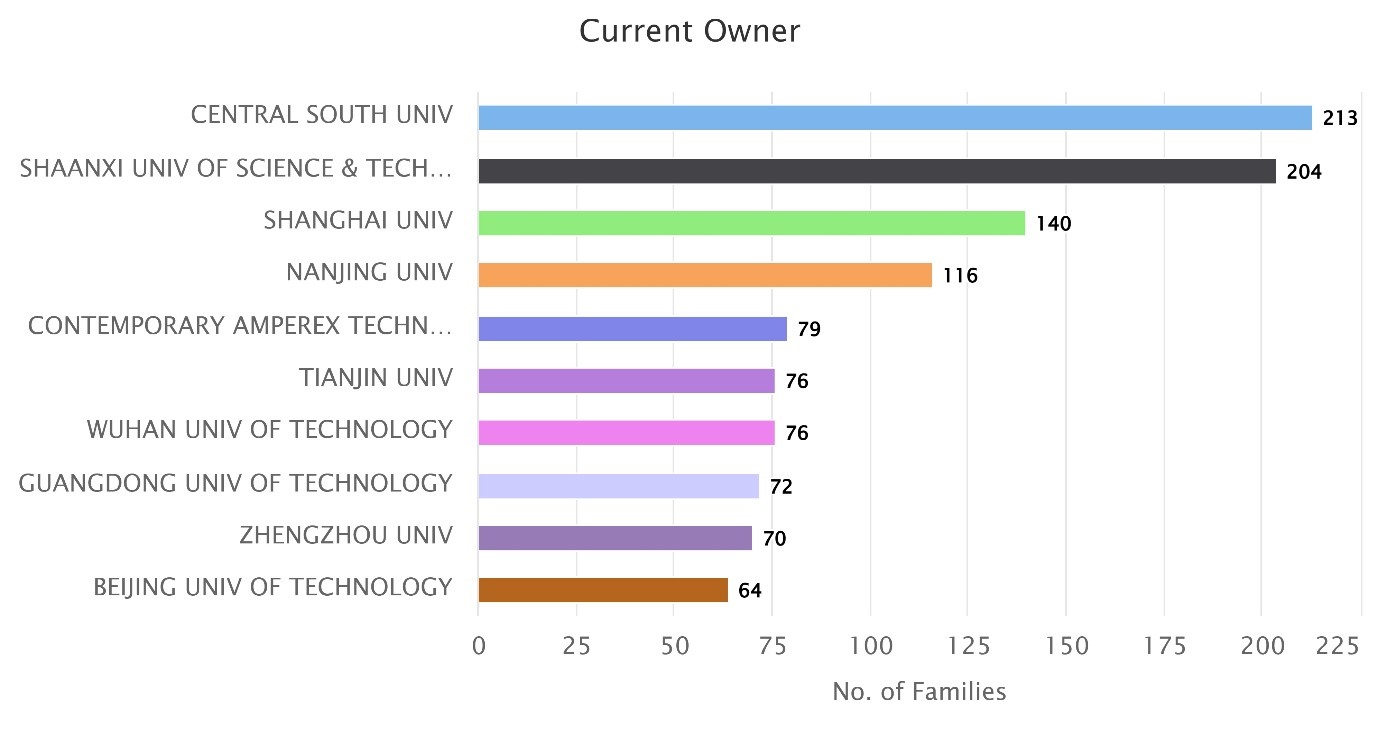


Patent Applications Filing Trends in Sodium-Ion Batteries Technology
The graph below illustrates the ongoing evolution of patents in the field. While patent publications date back to 2014, there has been a notable surge in recent filings, indicating a pronounced exponential increase in patent activity.
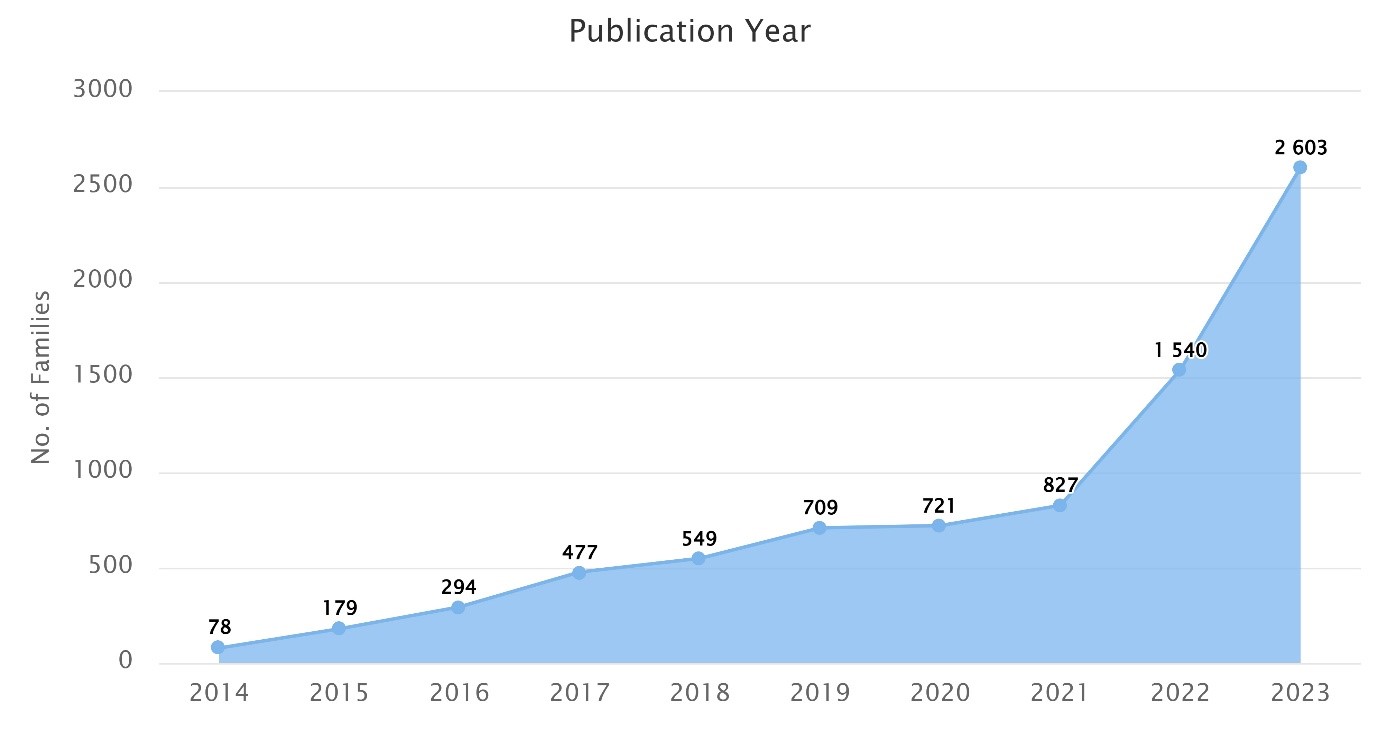


Global Distribution of Sodium-Ion Batteries Technology Patent Applications: Country-wise
Here, we present the global distribution of these patent applications. China emerges as the predominant contributor, followed by PCT applications at WIPO, with subsequent notable contributions from Japan, the USA, and Korea.
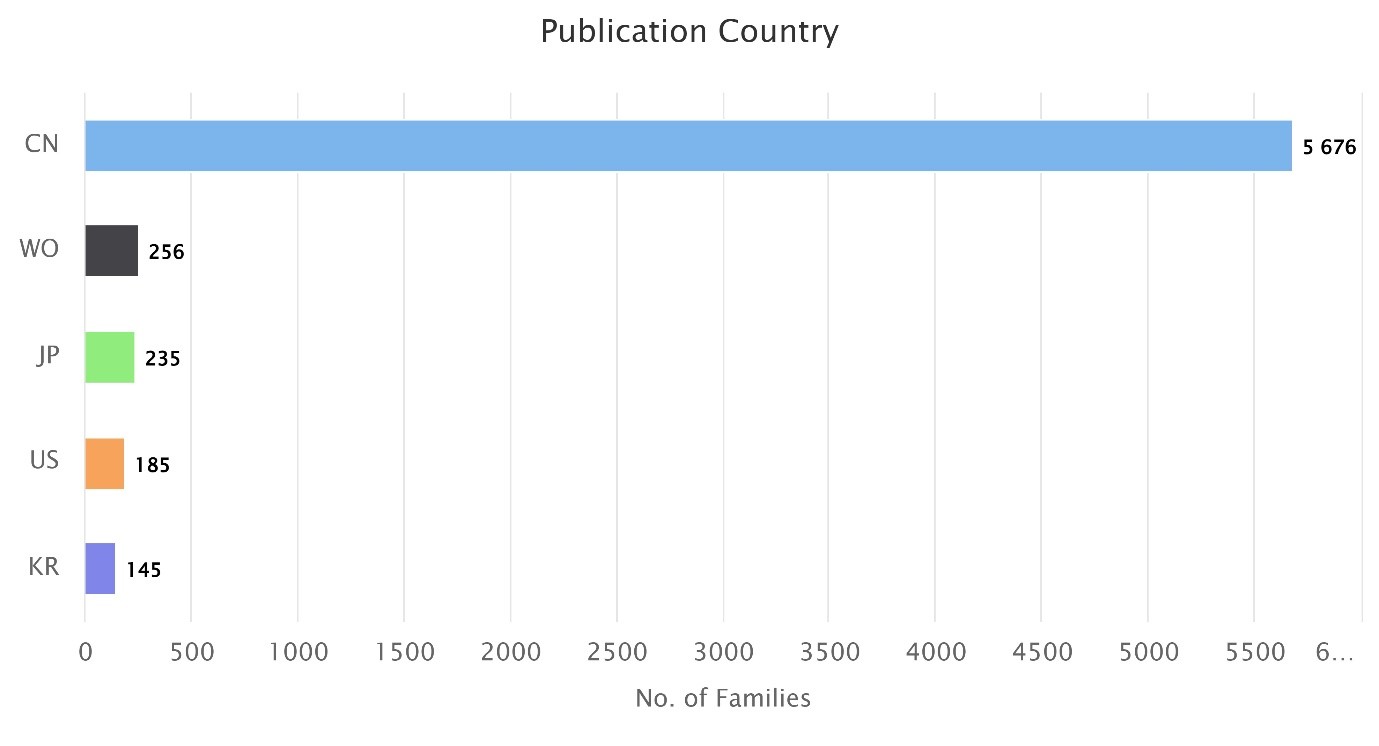


Patents with a significant number of forward citations
Some patents stand out with a significant number of forward citations, with two specific patents garnering the highest citation counts.
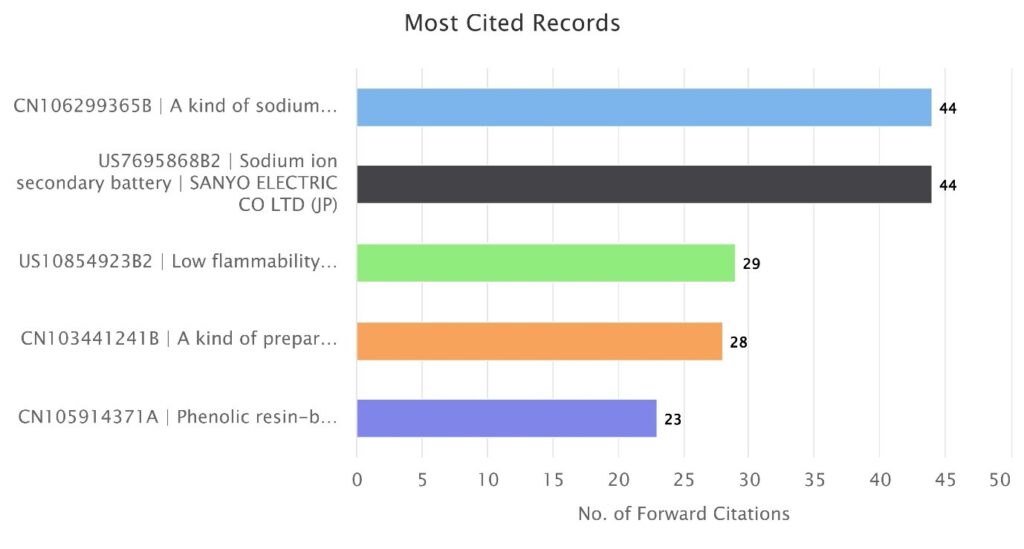


In essence, the advent of sodium-ion batteries heralds a transformative era where the democratization of electric vehicles becomes a tangible reality. As this technology progresses, nations of varying economic strengths and geographical characteristics can participate in the sustainable future of mobility, ushering in an era of inclusivity, economic empowerment, and environmental responsibility. Sodium-ion batteries stand not only as a technological advancement but as a catalyst for a more equitable and globally accessible electric vehicle revolution.
How we can assist you?
As pioneers in navigating the evolving landscape of energy storage technologies, we understand the pivotal role sodium-ion batteries play in transforming the electric vehicle industry. If you are a Chief R&D Officer, Chief Innovation Officer, CTO, CEO, or a dedicated scientist in the EV battery research field, consider leveraging our expertise. We specialize in providing comprehensive support for technology patent landscapes, freedom to operate searches, and in-depth analyses of patent and non-patent literature. Partner with us to stay at the forefront of innovation, ensuring your endeavors in sodium-ion battery technology are not only groundbreaking but also strategically protected. Connect with us to explore the possibilities together.




